| Belize Reef: Frigates and Boobies | |
| I love to dive, and this week's adventure let me dive down to the longest barrier reef in the western hemisphere, located off the coast of Belize. The underwater reef provides a home for a tremendous number of sea creatures. | |
| Not long before my first dive, I spotted a loggerhead sea turtle. This big turtle will swim up to a thousand miles to lay its eggs exactly at the spot where it was hatched. Though our feature creature, the frigate, won't be found underwater, it is, like the turtle, an egg-layer. |  |
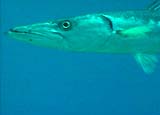 |
Though under water, I was able to talk through the use of an underwater microphone. While I was talking about the reef, a barracuda glided by. These fierce predators, which can grow up to six feet long, use their sharp teeth to shred fish. |
| A group of squid also glided by. Squid aren't fish but mollusks, like shellfish. | |
| Some of the most amazing living things underwater don't look alive at all! I spotted a sponge, which is actually a colony of living creatures working together. The tiny creatures that make up the sponge have tiny flagella to catch particles of food. Nearby, I saw a coral head. | 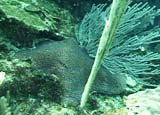 |
| Though it feels like stone, it's also a colony of tiny mollusks connected by thin layers of skin. It feels like rock, but it's the living backbone of the reef! | |
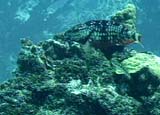 |
A curious parrot fish comes by. It gets its name from its sharp beak, which it uses to eat coral. The parrot fish then excretes a fine sand. I also spotted a trumpet fish, a thin silvery fish that stands straight up and waits for prey to swim by. The trumpet fish doesn't look like a fish, but -- as the small fish it eats soon learn -- that's a great fakeout. |
| The water near the reef is home to some large sea animals. I followed two rays: a southern stingray with its stinger tail and a beautiful spotted eagle ray. The eagle ray has a wingspan of eight feet! I wanted to follow it, but at 120 feet of depth, I was at the limit of how deep a diver should go. So I headed to the surface. | 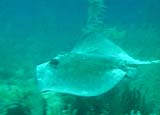 |
 |
Back on the surface, I went to Cocoa Plum Caye, a group of little islands, some separate, some joined by a narrow sandbar. I quickly plucked a snake out of a nearby palm tree, a boa constrictor (caution: do not try this at home). What's a boa doing on a small island, so far away from land? |
| Well, maybe some boas drifted here on a log, and they continued to live here. But they also started changing. The boas on the Caye, or island, are darker with a shiny luster. Could these boas be on their way to becoming a new species? It's quite possible. | |
| On the beach I found something used in ice cream: kelp, a type of algae. Though it sure doesn't taste like ice cream, the kelp has a stabilizer that's used to make ice cream smooth and creamy. |  |
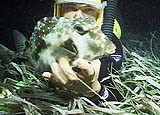 |
Before I went to find the frigate, I did a night dive. Astronauts have compared a night dive to being in space. I like the fact that you see so many different things on the reef at night -- and it's a bit spooky! I spotted a lobster, a boxfish whose boxy shape prevents it from being eaten, and a pregnant sea horse. |
| (Did you know that the male sea horse is the one that gives birth?) My heart began beating fast when I saw a spotted moray, an aggressive eel that you don't ever want to corner. | |
| But onto the frigate, also known as the man-of-war (and no, it's not a ship but a bird). I find it nesting on an island filled with mangroves. The frigate bird has a six-foot wingspan and gets its name from the aggressive way it steals other birds' food. | 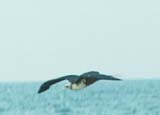 |
| Though the frigates are good at stealing food, they build very flimsy nests, which look as though they might let the eggs roll right out. | |
 |
How do you tell the male from the female frigate? The male has a bright red balloon shape on its throat. And if you happen to visit this island filled with frigate birds, wear a hat. That's not rain that falls from the sky! |
| -Totally wild, JeffBack to main Journal page |
|